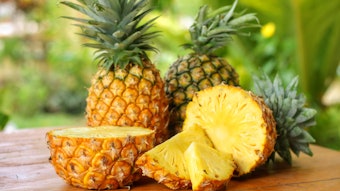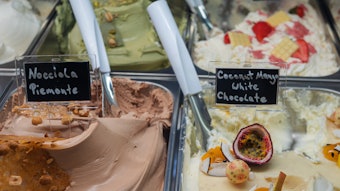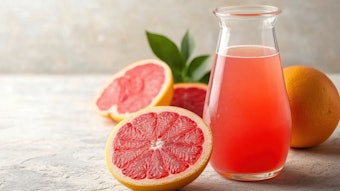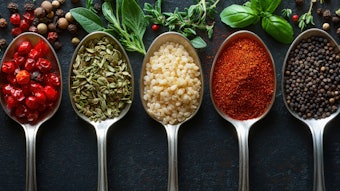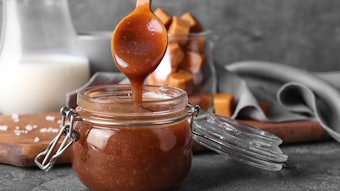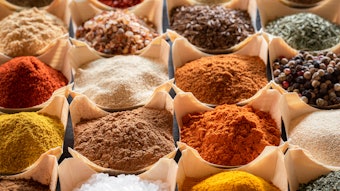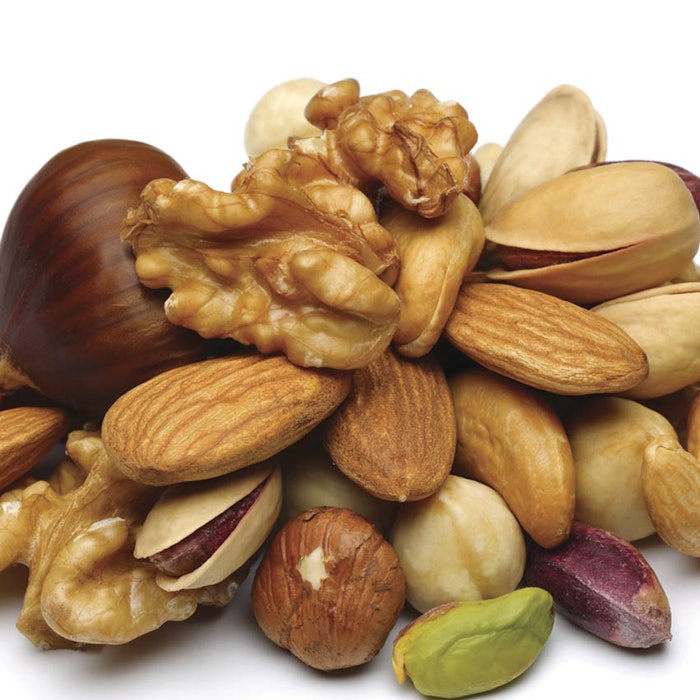
Hexanal (FEMA# 2557, CAS# 66-25-1), sometimes referred to as aldehyde C-6, is a highly useful contributor to a veritable smorgasboard of green complexes. It adds an aspect of unripeness that can contribute significantly to the overall perception of freshness when it is used in moderation. It is especially important to tailor the level to the effect that is desired for each flavor profile, and my suggested levels of addition should only be taken as a starting point. I am sure this is true for every article, but it is especially true in this case.
Note that the dose rates given throughout this article are the levels suggested for use in flavors intended to be dosed at 0.05% in ready-to-drink beverages or in a simple bouillon.
Tropical Fruit Flavors
Pineapple: Hexanal can be used at quite a high level, around 2,000 ppm, in fresh pineapple juice flavors, adding freshness and lift without much risk of drifting into an overtly unripe profile.
Kiwi: Even though kiwi flavors can often err too far on the lighter side, this raw material is nevertheless highly helpful in conveying a natural, fresh fruit profile at quite high levels. Additions in the region of 1,000 ppm work very well.
Guava: Guava flavors, in total contrast, can easily tend to be a little heavy and dull. An addition of 800 ppm, they will raise the perception of freshness significantly.
Banana: Here, it is important not to overdose this raw material (unless the target is specifically an unripe banana flavor). A level of 500 ppm adds freshness and impact without any negative connotations.
Mango: A level of 500 ppm also functions effectively in mango flavors, brightening and freshening the profile.
Watermelon: Higher levels of hexanal can easily tip watermelon flavors into an unwelcome realm of unripeness, but a modest addition, around 100 ppm, works well.
Citrus Flavors
Orange: Hexanal can be effective at low levels in peely orange flavors, but it really comes into its own in orange juice flavors, where there is a strong temptation to overdo it. In my opinion, 500 ppm is an ideal level.
Tangerine: The same comments are equally true for tangerine flavors, but the ideal level of addition of this ingredient in juice style flavors is a little lower, nearer 300 ppm.
Grapefruit: Hexanal settles a little less harmoniously into grapefruit juice flavors than into orange flavors, but it can still be quite helpful at 100 ppm.
Orchard Fruit Flavors
Apple: This ingredient is a perfect fit in apple flavors. Higher levels confer more of an impression of green than red apples, but still does not become unpleasantly unripe. A good starting point is 1,000 ppm.
Peach: An addition of 200 ppm of hexanal is a much more modest level and is a good starting point for fresh peach flavors. Higher levels can add impact, but quickly risk becoming unripe.
Apricot: The same comments are true for apricot flavors, but the best level is lower, around 100 ppm.
Other Fruit Flavors
Blackberry: An addition of 1,000 ppm of hexanal has a significant counterbalancing effect when set against the typical heavy, musk notes in ripe blackberry flavors.
Blackcurrant: Slightly lower levels, nearer 800 ppm, are equally effective in authentic blackcurrant flavors, adding freshness.
Blueberry: Blueberry flavors typically have dominant floral notes and this ingredient can help to add freshness to this category. The ideal level of addition is around 1,000 ppm.
Grape: Hexanal is most effective in white grape flavors, which have some structural similarity to blueberry flavors. A good starting point would be 2,000 ppm.
Raspberry: My ideal raspberry flavor combines the contrasting attributes of overripe (candy and berry notes) and fresh (green and unripe notes) in one flavor. These extremes may be unlikely companions in nature, but they produce a very attractive profile. An addition of 1,000 ppm of hexanal helps achieve this balancing act without specifically tipping the flavor into unripe territory.
Strawberry: The green complex of a good strawberry flavor can be quite complex and this ingredient only plays a secondary role. A level of 100 ppm is fairly ideal.
Nut Flavors
Hazelnut: Used carefully, hexanal can add welcome freshness to all nut flavors, but high levels can easily lead to unpleasant rawness. The ideal level of addition to hazelnut flavors depends on the profile, but 300 ppm is a reasonable starting point.
Peanut: Similar caution is required when adding this ingredient to peanut flavors and 300 ppm is also a good initial level. Differing levels of roast notes may modify this recommendation a little.
Walnut: Of all nut profiles, hexanal is probably most helpful in walnut flavors. This flavor category can usefully absorb higher levels of addition, around 500 ppm, without becoming raw.
Pistachio and Almond: Authentic almond and pistachio flavors only need a moderate level of addition of this ingredient to give pleasant lift and freshness. An addition of 200 ppm is a good starting point.
Other Flavors
Bread: Freshly baked bread notes are quite elusive, complex and challenging to recreate. A subtle addition of around 100 ppm of hexanal can be helpful, even if it is far from being a dominant note.
Butter: Use of hexanal in dairy flavors is interesting, but also rather limited. A modest addition of 100 ppm to fresh butter flavors, however, can be quite helpful.
Potato: Cooked potato flavors are not especially subtle and single chemicals can easily dominate, making the effect disturbingly artificial. An addition of 1,000 ppm of hexanal is effective toward adding a fresh vegetal note and offsetting dominant sulfur potato, boiled or fried notes.
Rum: Hexanal is only a minor component of rum flavors and is much more at home in dark rum profiles than is light rum profiles. A level of 50 ppm is all that is required to add a pleasant element of freshness.
Tea: In contrast, this ingredient is quite prominent in tea flavors. The fresh effect of levels as high as 1,000 ppm works well in green tea flavors and the, somewhat lower, level of 400 ppm gives a pleasant contrast to floral black tea flavors.
Whisky: The effect of this ingredient in whisky flavors is very similar to the effect in rum flavors and the ideal level of addition is also similar, around 50 ppm.
